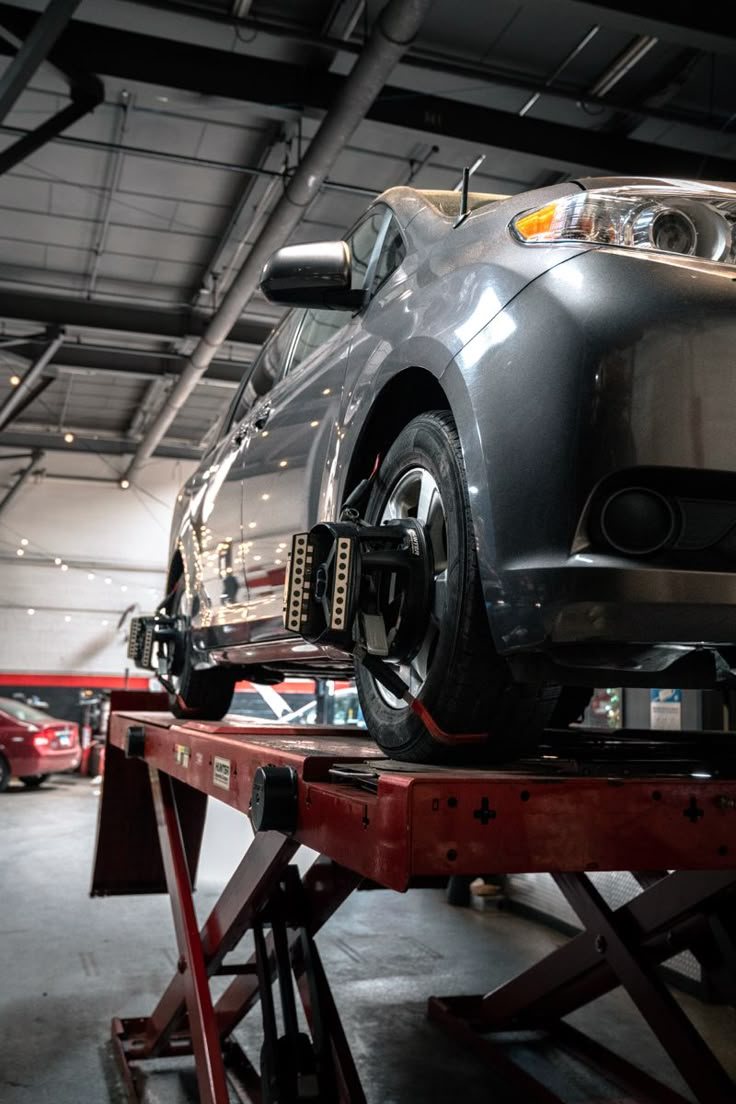
Wheel Alignment in Saudi Arabia | Improve Control, Tire Life & Fuel Economy – Estbnh

What is Wheel Alignment?
Wheel alignment — also known as tire alignment or suspension adjustment — refers to the precise adjustment of your vehicle’s wheel angles to ensure they're perfectly aligned with its chassis. The purpose is to distribute vehicle weight evenly across the tires, which improves handling, reduces tire wear, and enhances fuel efficiency.
At Estbnh, we offer advanced wheel alignment services tailored to Saudi roads, ensuring your ride stays smooth and safe.
Why is Wheel Alignment Important?
Proper wheel alignment brings multiple advantages:
Better Handling and Control: Especially during turns and at high speeds.
Improved Fuel Efficiency: By minimizing tire rolling resistance.
Extended Tire Lifespan: Even wear helps your tires last longer.
Enhanced Safety: Stable steering response for emergencies or long trips.
When Do You Need a Wheel Alignment?
You may need to align your wheels if:
The vehicle pulls to one side.
The steering wheel isn’t centered while driving straight.
You experience vibration in the steering wheel.
You hear squealing noises during turns.
After suspension repairs or tire replacement.
You notice uneven or rapid tire wear.
How is Wheel Alignment Performed?
At Estbnh, we follow a state-of-the-art process:
Digital Inspection with high-precision sensors.
Angle Measurements including camber, toe, and caster based on manufacturer specs.
Suspension Adjustments to ensure perfect alignment.
Post-Service Testing to guarantee smooth performance.
Wheel Alignment vs Tire Balancing
Wheel Alignment: Adjusts wheel angles to ensure proper contact with the road.
Tire Balancing: Ensures even distribution of wheel weight to eliminate vibrations.
Both services are essential for optimal performance and should be done together when needed.
Tips to Maintain Proper Wheel Alignment
Check alignment every 10,000 km or when symptoms appear.
Avoid speeding over potholes or bumps to protect suspension integrity.
Regularly inspect tire tread wear patterns.
Address any unusual noises or shaking immediately.
Frequently Asked Questions About Wheel Alignment
1. What is wheel alignment?
Wheel alignment is the process of adjusting the angles of your car’s wheels to ensure they are aligned with the vehicle’s body for better control, fuel efficiency, and safety.
2. What are the benefits of wheel alignment?
Improved driving stability
Better fuel economy
Extended tire lifespan
Enhanced steering response
3. When should I check for alignment?
You should check your alignment when:
Your car pulls to one side
The steering wheel is off-center
After hitting a curb or pothole
After suspension or tire work
4. Is wheel alignment the same as suspension adjustment?
Yes, in many contexts. Wheel alignment involves adjusting suspension components that control wheel angles. Locally, it's also referred to as "arm balancing" or "tire adjustment."
5. How is wheel alignment different from tire balancing?
Alignment: Adjusts the position and angle of the wheels.
Balancing: Ensures the wheel and tire weight is evenly distributed to avoid vibrations.
Book your appointment now: www.estbnh.com
If you are a vendor Click here
Notifications

List is Empty :)
Nothing to read for now. There is no any Notification here




 ar
ar 
 En
En